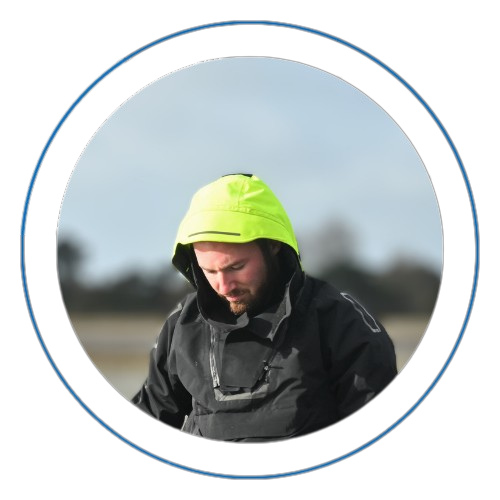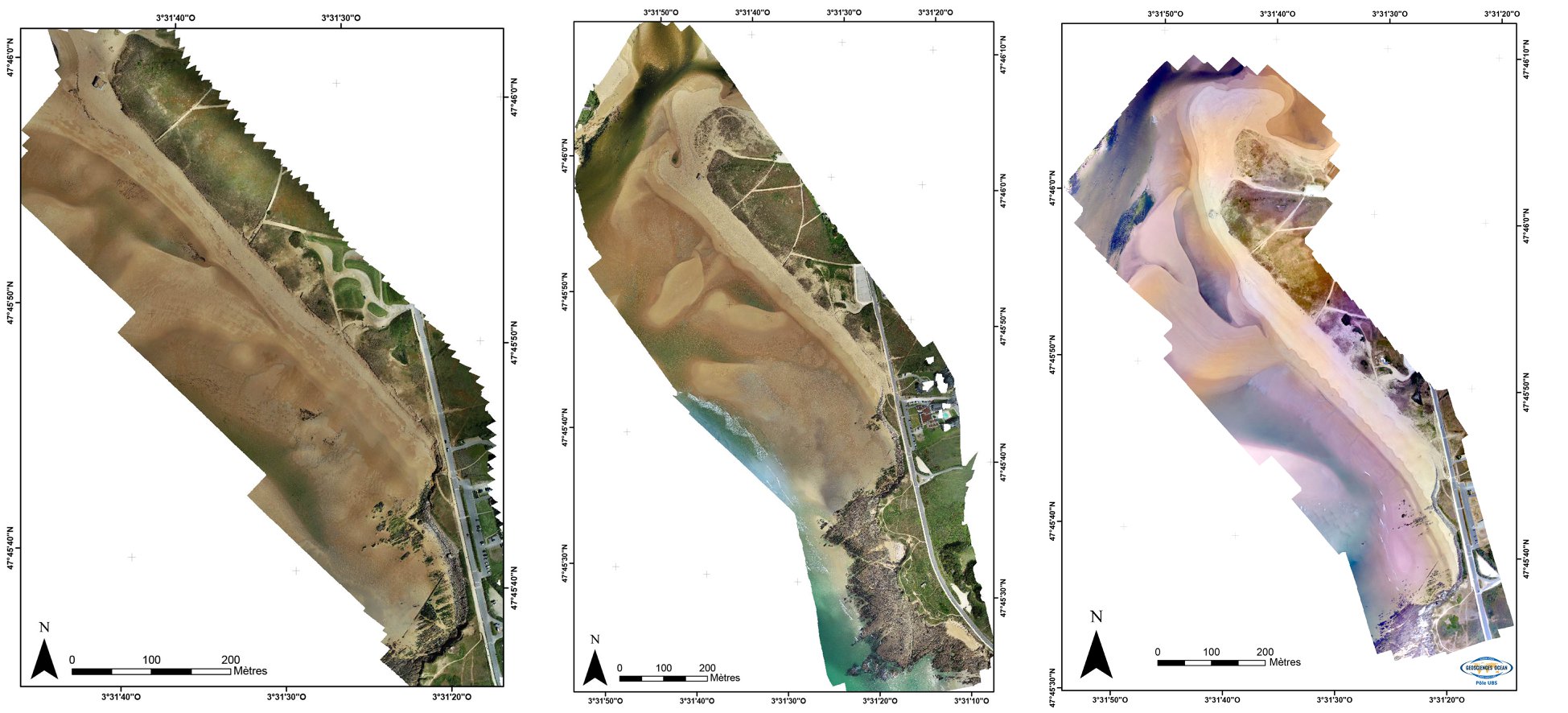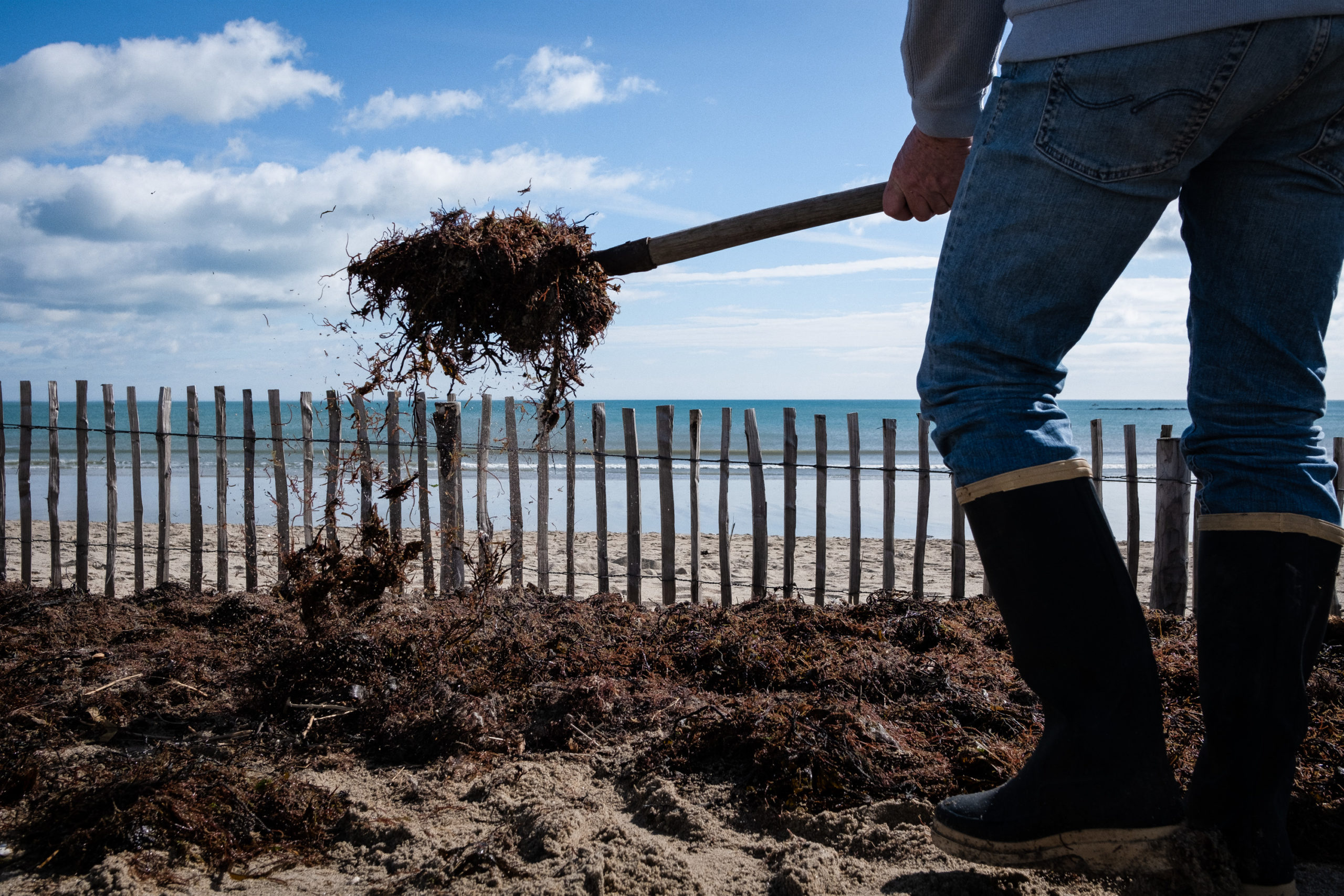
Glen Bulot
OCLM project manager
Skills
Littoral hydro-morphodynamics
Professional UAV pilot
Project management
Field data acquisition and analysis
Scientific communication
Photograph
OCLM and Social media management
Citizen participatory sciences
About
As a LGO UBS engineer, Glen Bulot is a project manager for the Citizen Observatory of the Morbihan Coast (OCLM). With great motivation, he manages data acquisition and processing, ensures relations with various associations and trains citizens in participatory sciences where he brings all his expertise to meet the demands of citizens, professionals and territorial institutions. Moreover, as a coastal project manager, he actively participates in various research projects on the dynamics and management of coastal systems on a national and international scale. He masters the hydrodynamic measurement tools (current-wave meters, wave-gauges, etc.), topography (DGPS, Tacheometer) and sedimentary (sampling, particle size analysis) necessary for the operation of LGO projects. He is also a professional UAV pilot and actively develops tools and processing methods for photogrammetry.
Interview : Engineer, littoral project manager
What is your career path ?
I began with a bachelor's degree in environmental science, in which I specialized step by step in geosciences and littoral. I proceeded to continue with a Master's degree in Coastal Resources Engineering and Management, taught by the laboratory. During my 1st-year internship, I conducted a hydro-morpho-sedimentary study of the Guidel beach site (Cliff beach, Du Pouldu, La Flèche, Sand strip associate, and the Laïta River estuary). Since 1954 through current data, I took an interest in the evolution of this particular site at different time scales. During my 2nd-year internship, I participated in an impact study at the Trinité-sur-Mer port for the Morbihan Port Company.
Click Here to know more about IGREC Master's degree
Why did you choose a sea-related career path ?
Simply because I live at the seashore, precisely on an island. I’m naturally very interested and concerned about all the issues linked to this environment. Moreover, during my academic path, the sea came to me naturally, and I got hooked very quickly.
You regularly observe the Morbihan beaches and their evolution: Should we be concerned about coastal erosion and sea level rise?
Indeed, in some areas of Morbihan, and, of course, further away, erosion and sea level rise will be a huge issue for many people. However, I don't think that I'm 'worried.' Starting today, we have to prevent this evolution and think about the action and behavior we have to adopt. My concern is more focused toward the acknowledgment of these subjects by public authorities and population. It is crucial not to underestimate the future impact.
As an engineer, what is your role in the laboratory's research projects? What expertise do you bring?
I provide support to the laboratory members on various coastal projects they are working on. As a drone pilot, I am frequently involved in preparing survey missions and processing images for orthophotography, for example. As part of research projects, I also conduct hydrographic, topographic, sedimentary measurements, and more. I also participate in discussions and considerations on topics addressed by the laboratory members (theses, articles, exhibitions, internships…).

Orthophotographie de la plage de Guidel, de 2017 à 2019.
Finally, I also have the task of managing and leading the OCLM. In this role, I meet with coastal stakeholders (politicians, managers, professionals, associations, etc.) to bring our expertise during the decision-making process.
The laboratory recommends "soft" solutions in response to coastal erosion. Can you explain this choice?
This choice is quite simple. For a few years now, we have noticed their efficiency, probably even more so than “hard” solutions. Indeed, this type of solution doesn’t bring the negative effect of heavy structures. Furthermore, they are way more sustainable thanks to their composition, frequently wood, and the price (especially for small communities) can't be compared to the colossal budget required to build and maintain these hard structures.

Dépôt d'algues brunes et rouges à Gâvres dans des "AlgoBox", procédé d'éco-ingénierie développé par le laboratoire. La dégradation des algues permet d'enrichir le milieu en matière organique, le rendant propice à la colonisation de plantes fixatrices qui, à leur tour, favorisent le captage éolien.
You have been an OCLM project manager for a few years. What outcome do you find in this experience?
It’s a very positive outcome. The system that we put in place is really functional and is starting to spread widely. New sites join us every year. The sharing of knowledge with citizens is very interesting in both ways. It allows us to adapt our scientific terms to the public and also to provide access to the understanding of the various sites in which we are implemented.
Citizen science has bright days ahead !
How do you see your career evolving? Any ongoing projects?
I’m willing to pursue the mission in which I’m currently involved, such as the various new projects with the OCLM. There is also the TIGER Interreg project, the GOF-Boulders Project in Morocco, some books, and scientific papers in preparation… However, the Morbihan littoral survey by drone is also a big part of my work. This strong implication in the team, the diversity of projects, the omnipresent fields activities, the drone, the autonomy, and the subject really pleases me.

